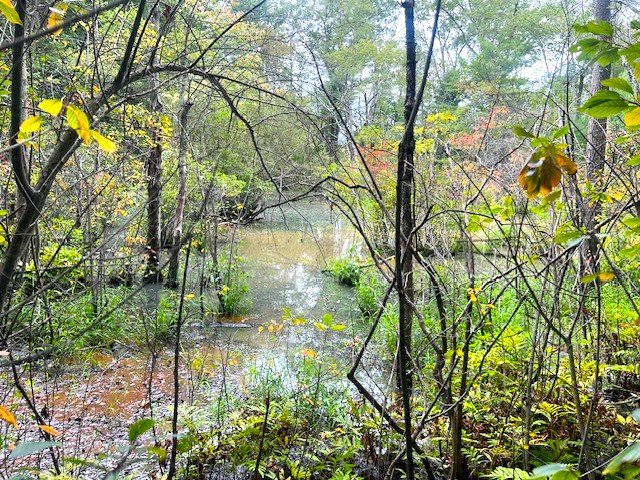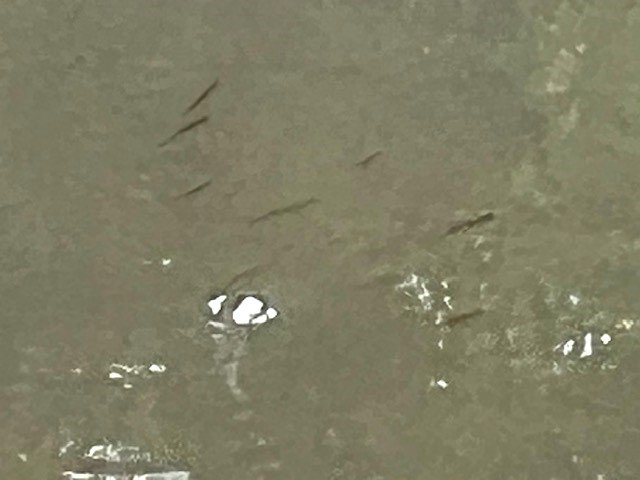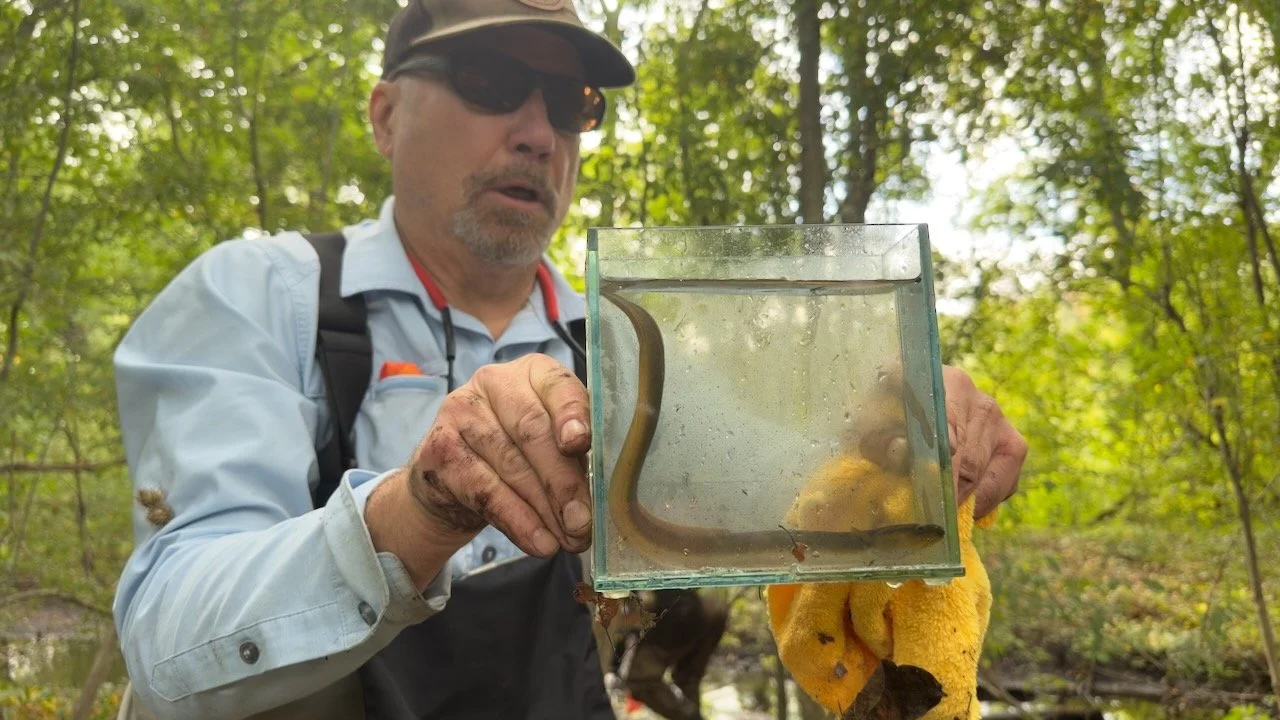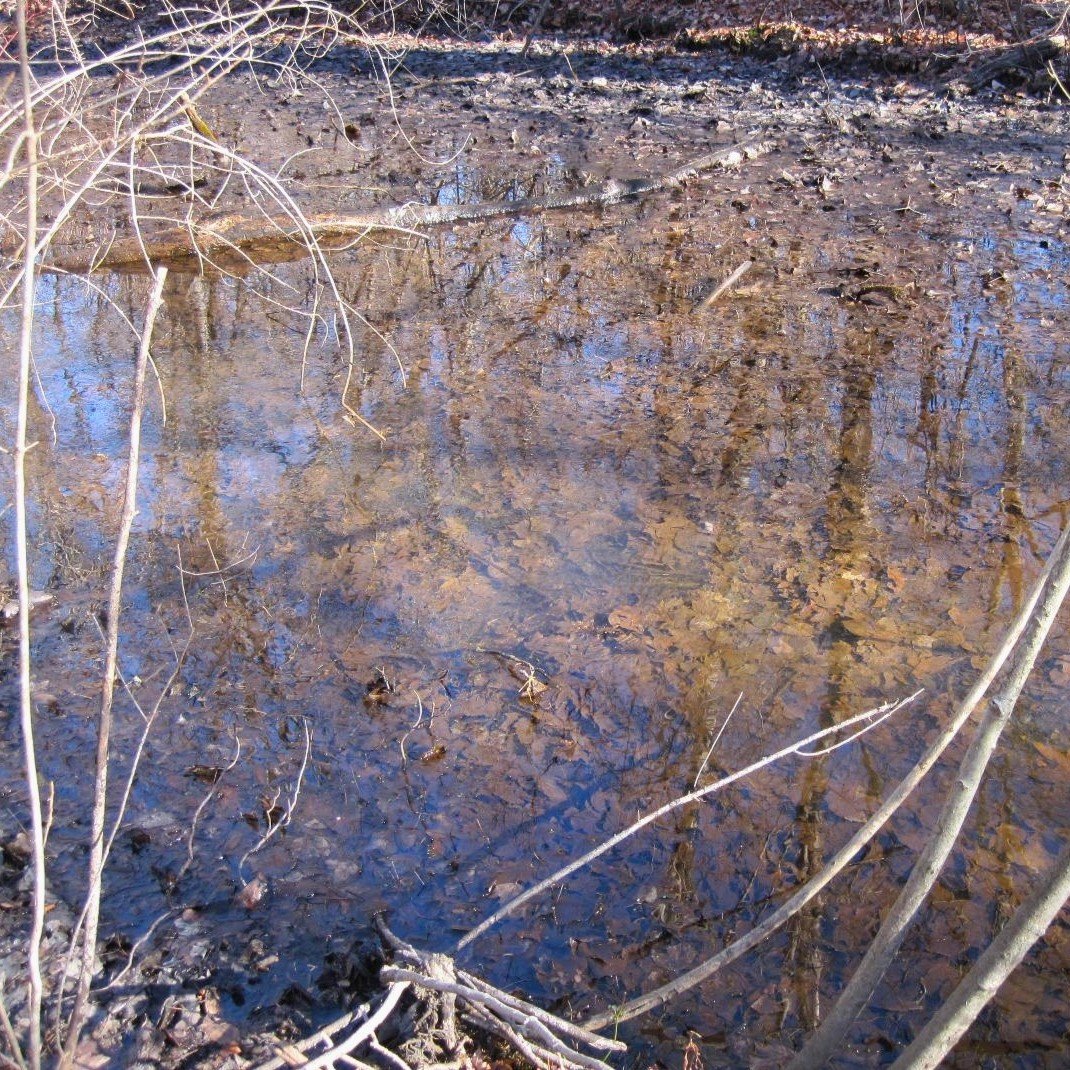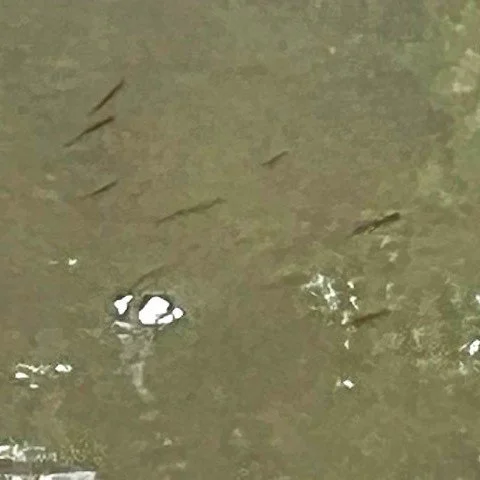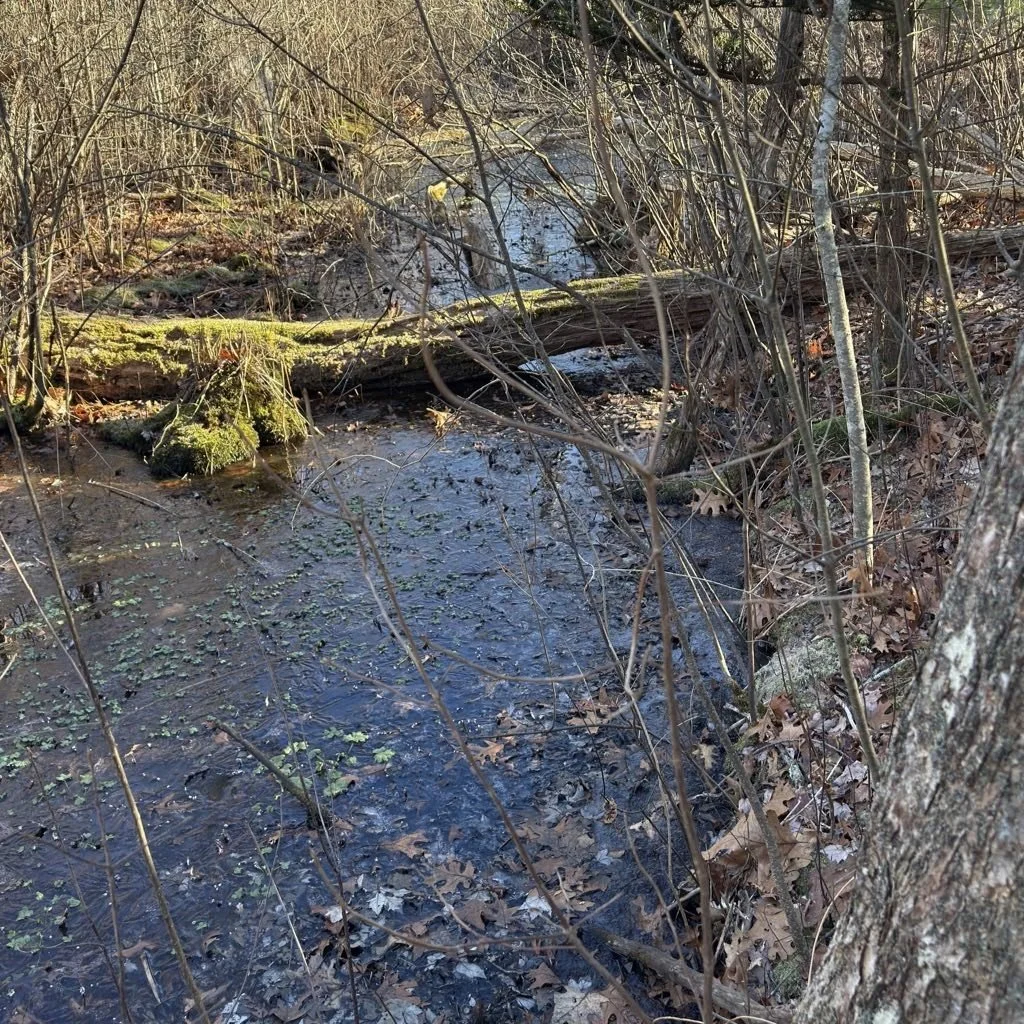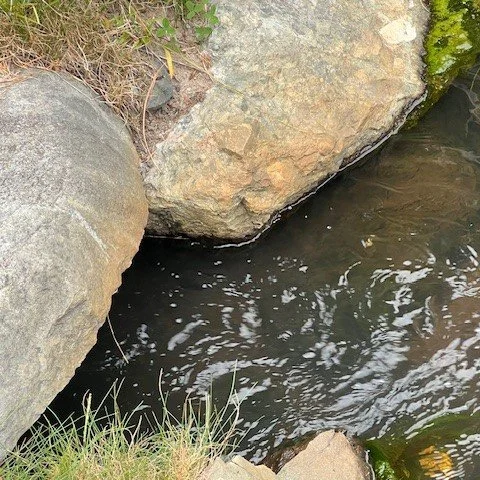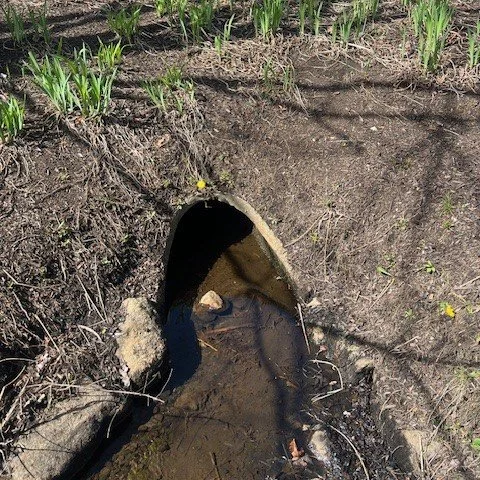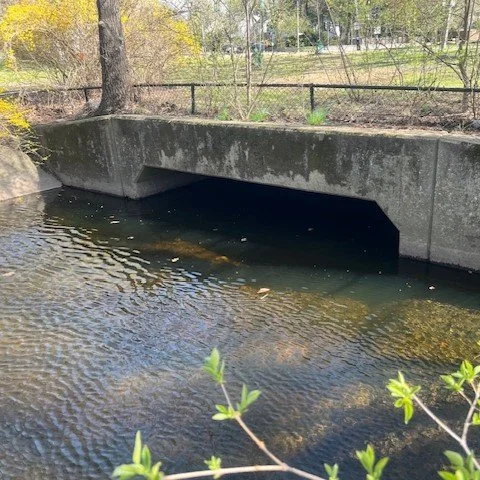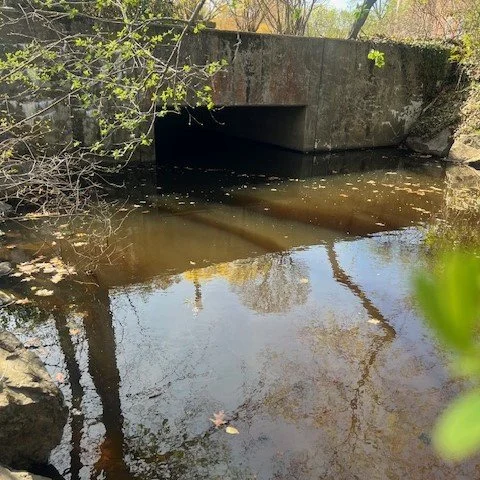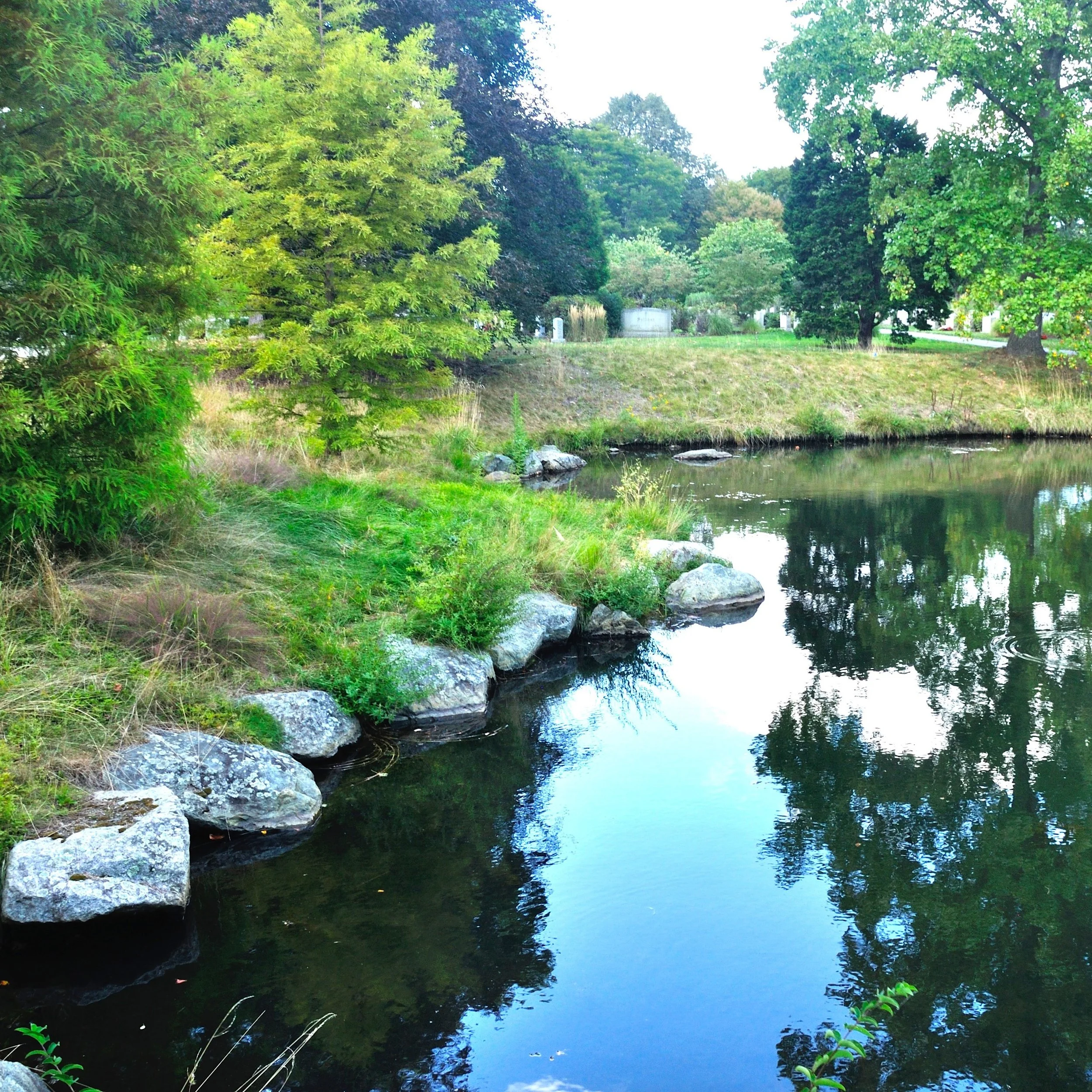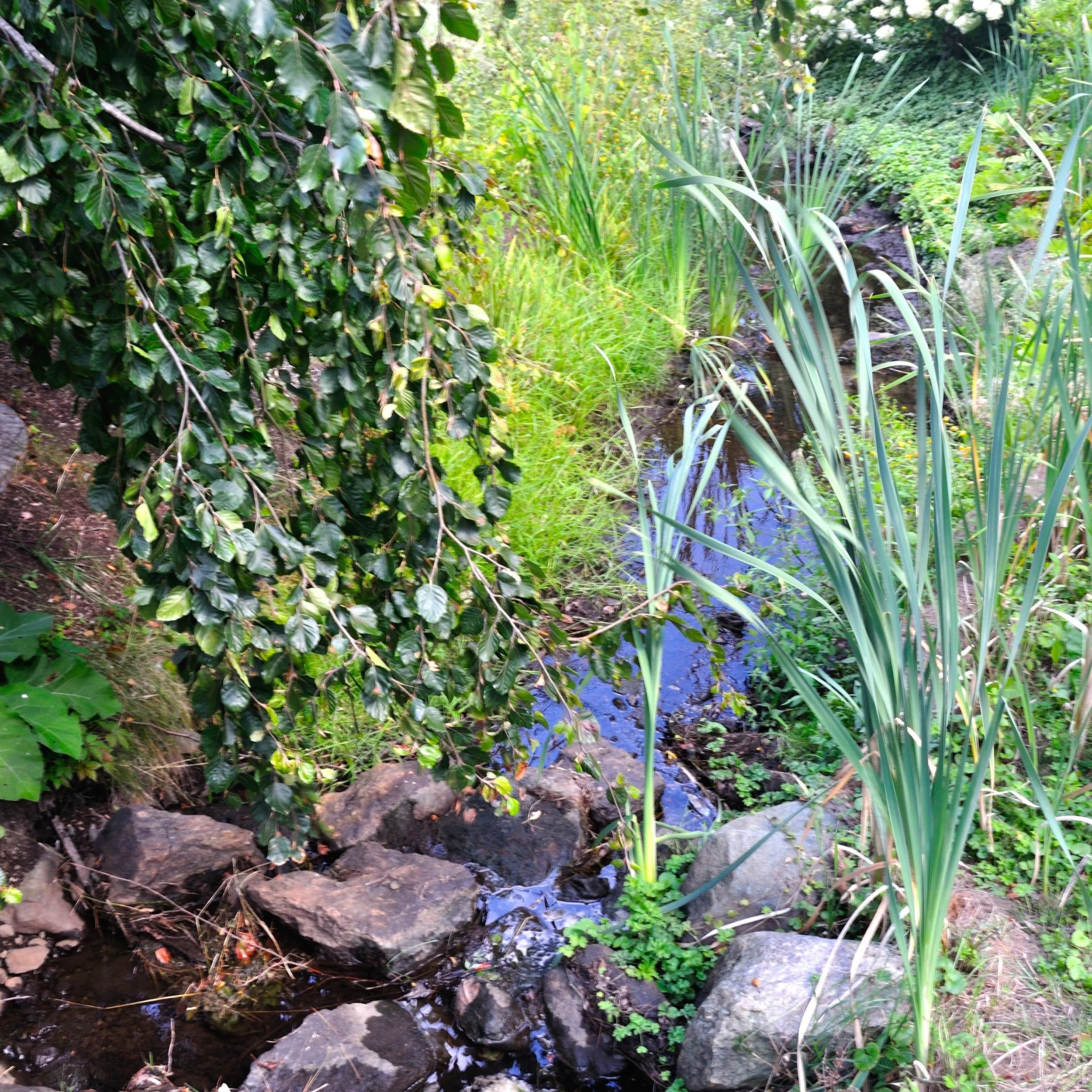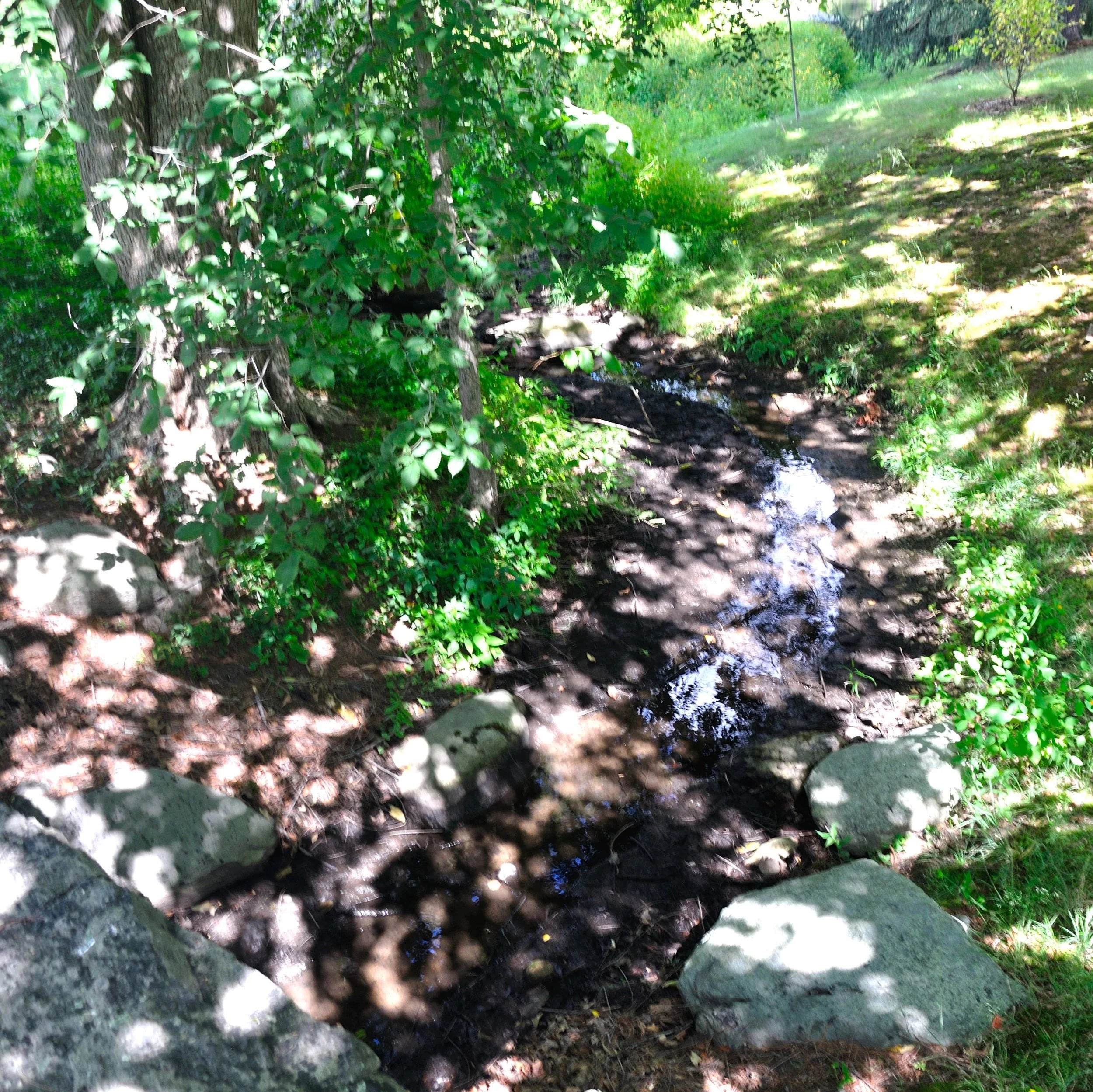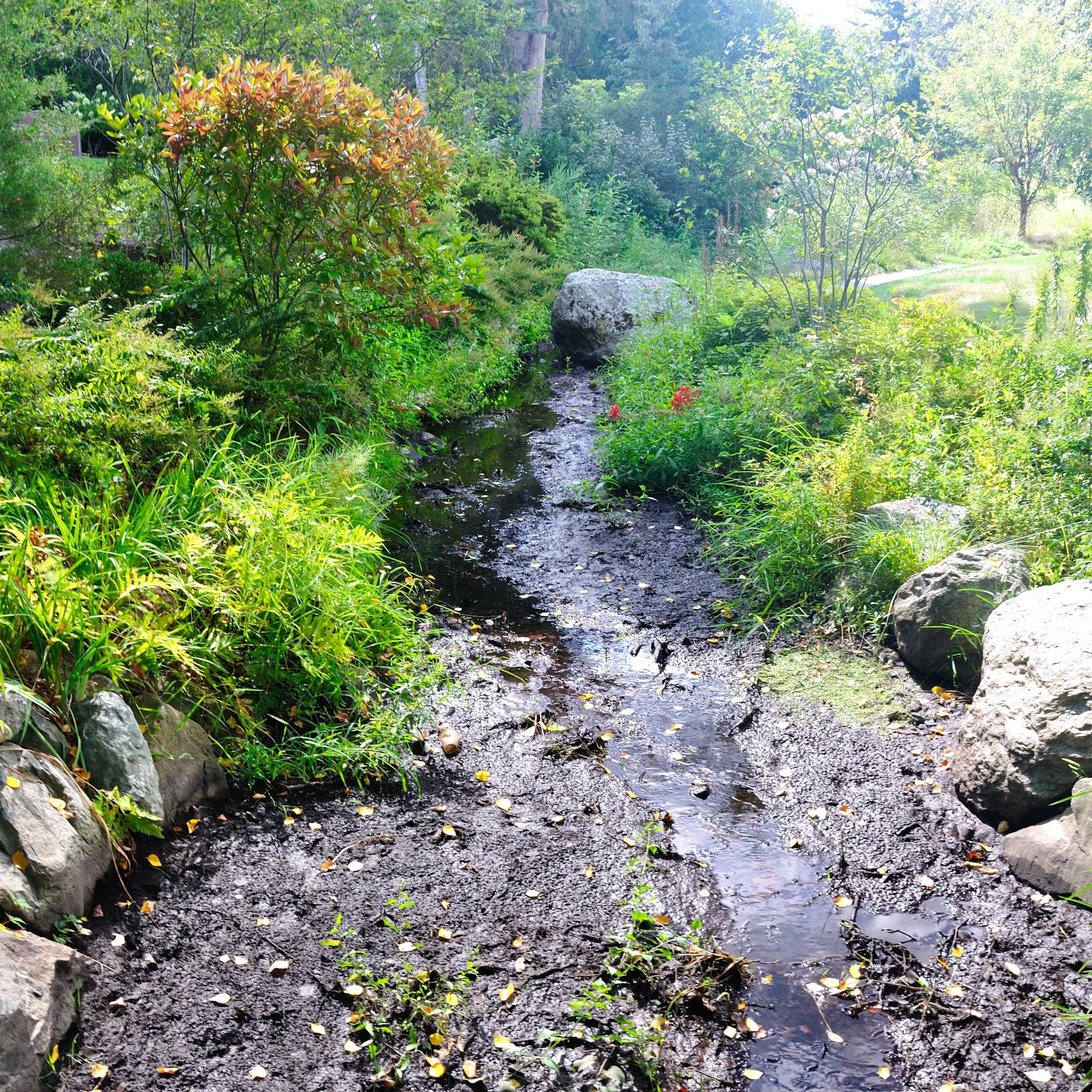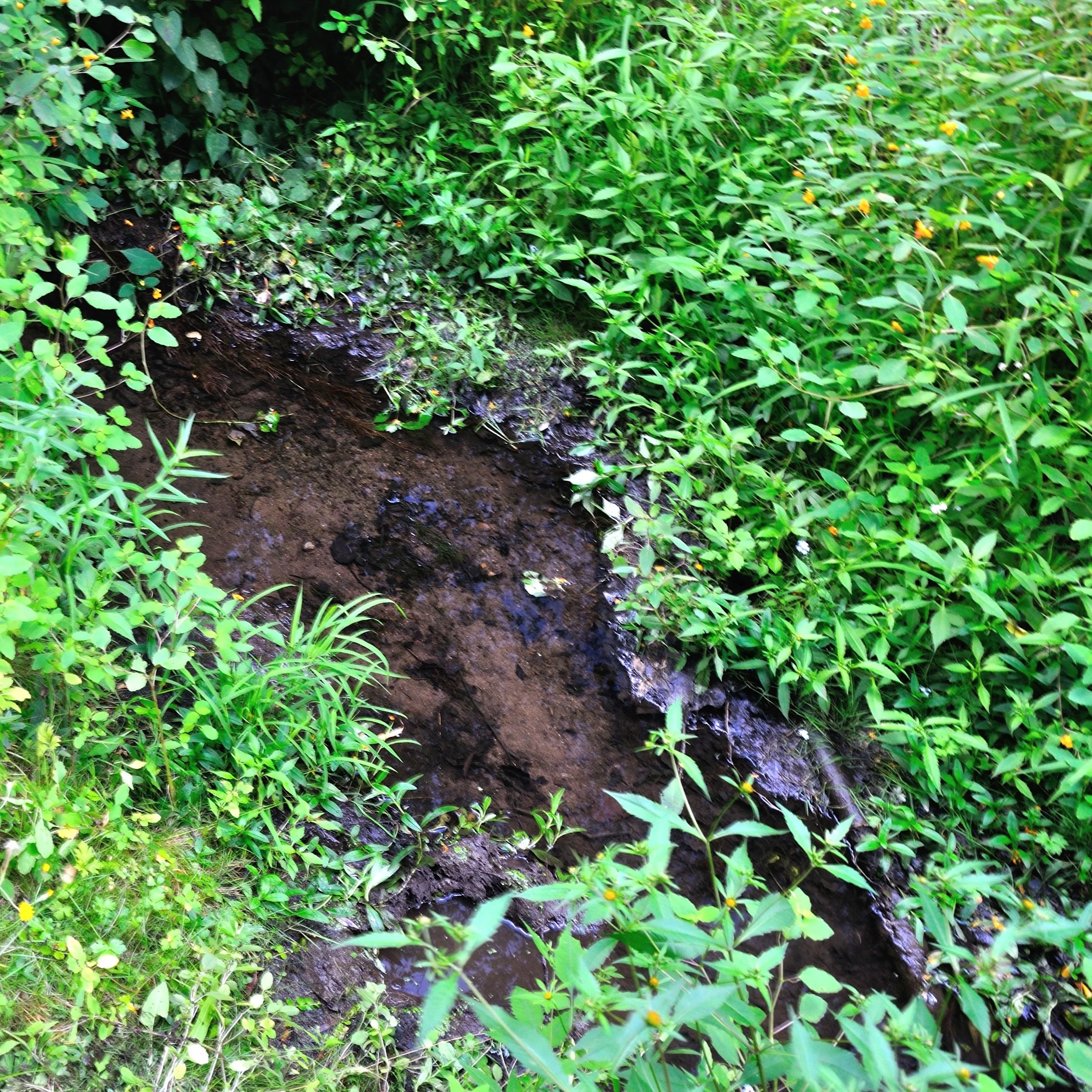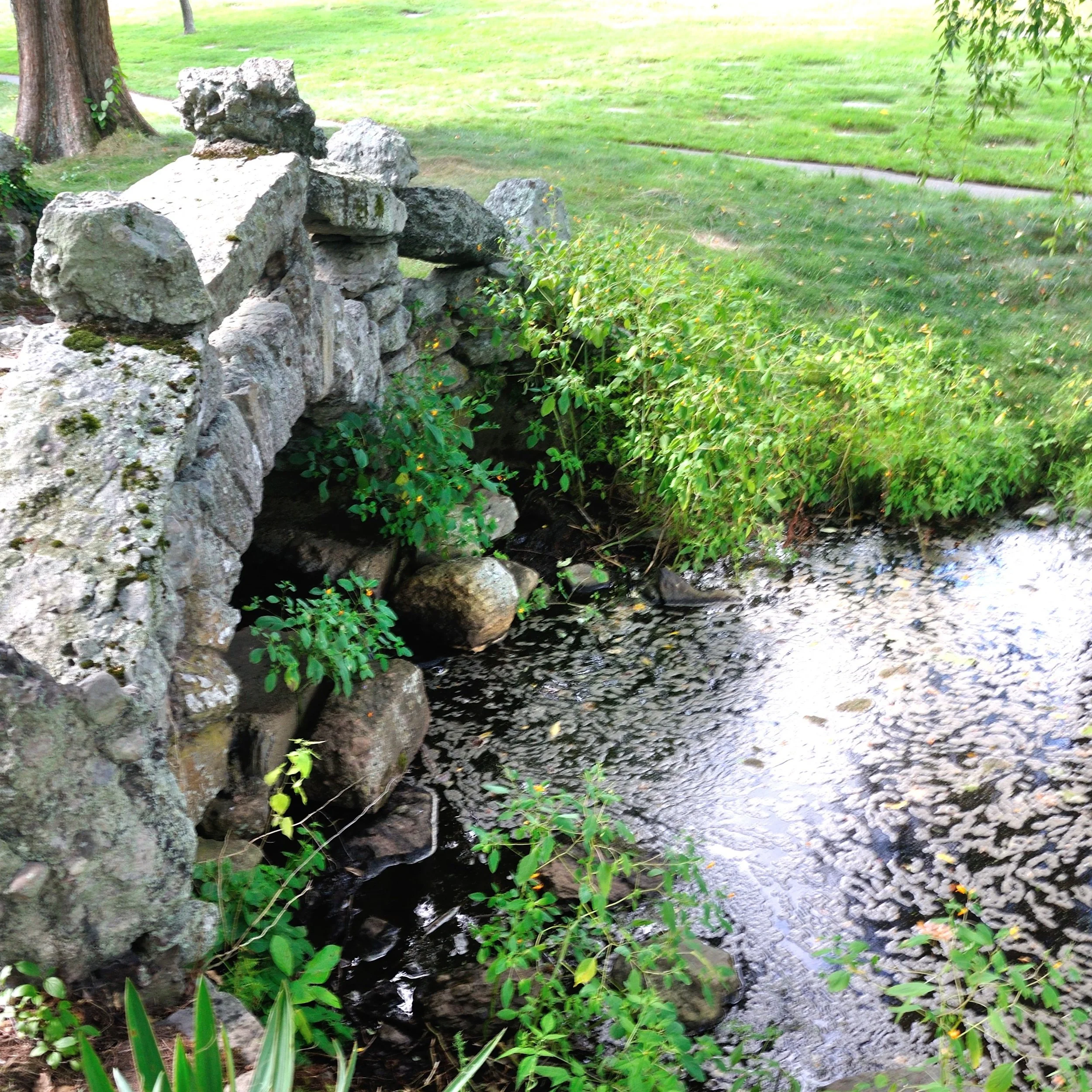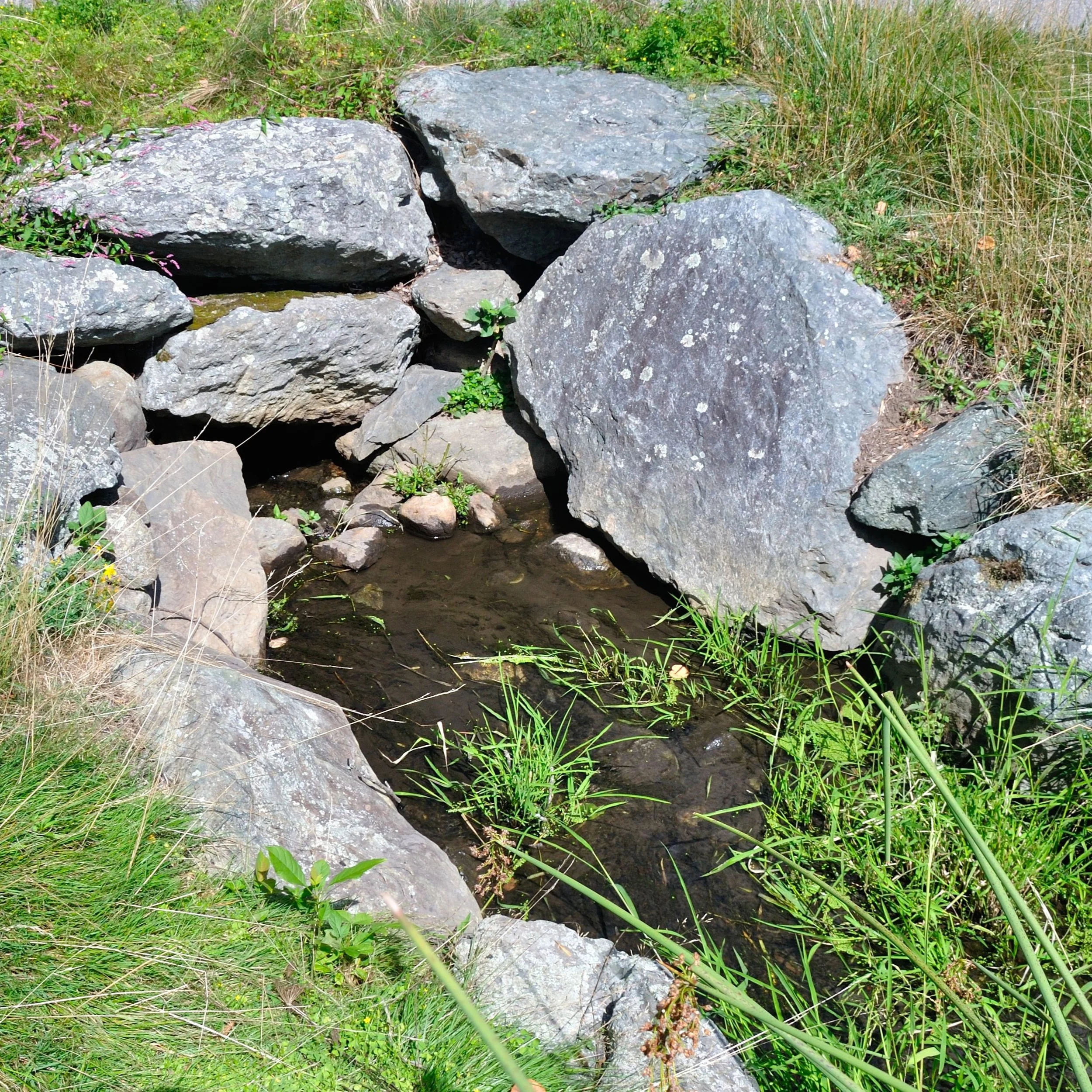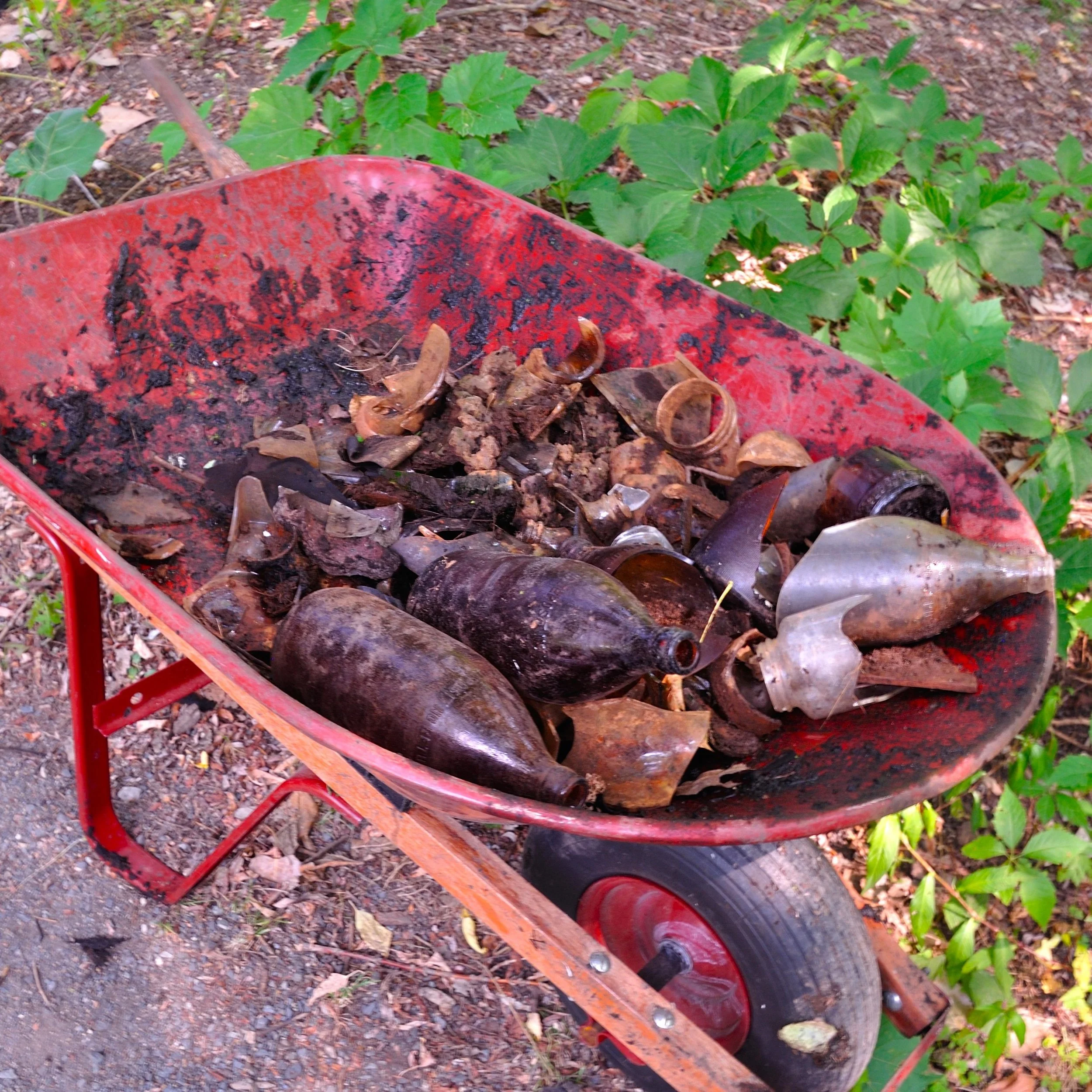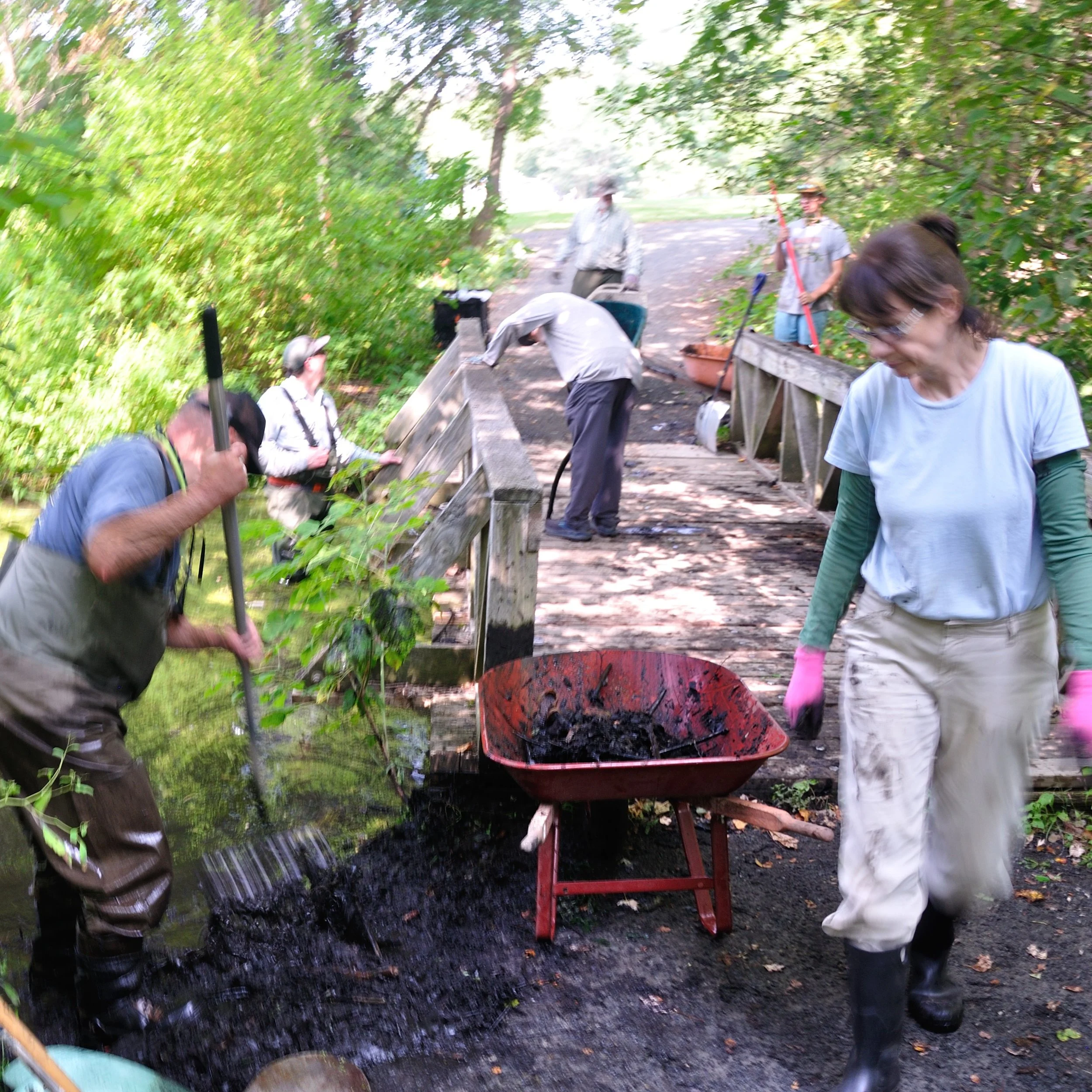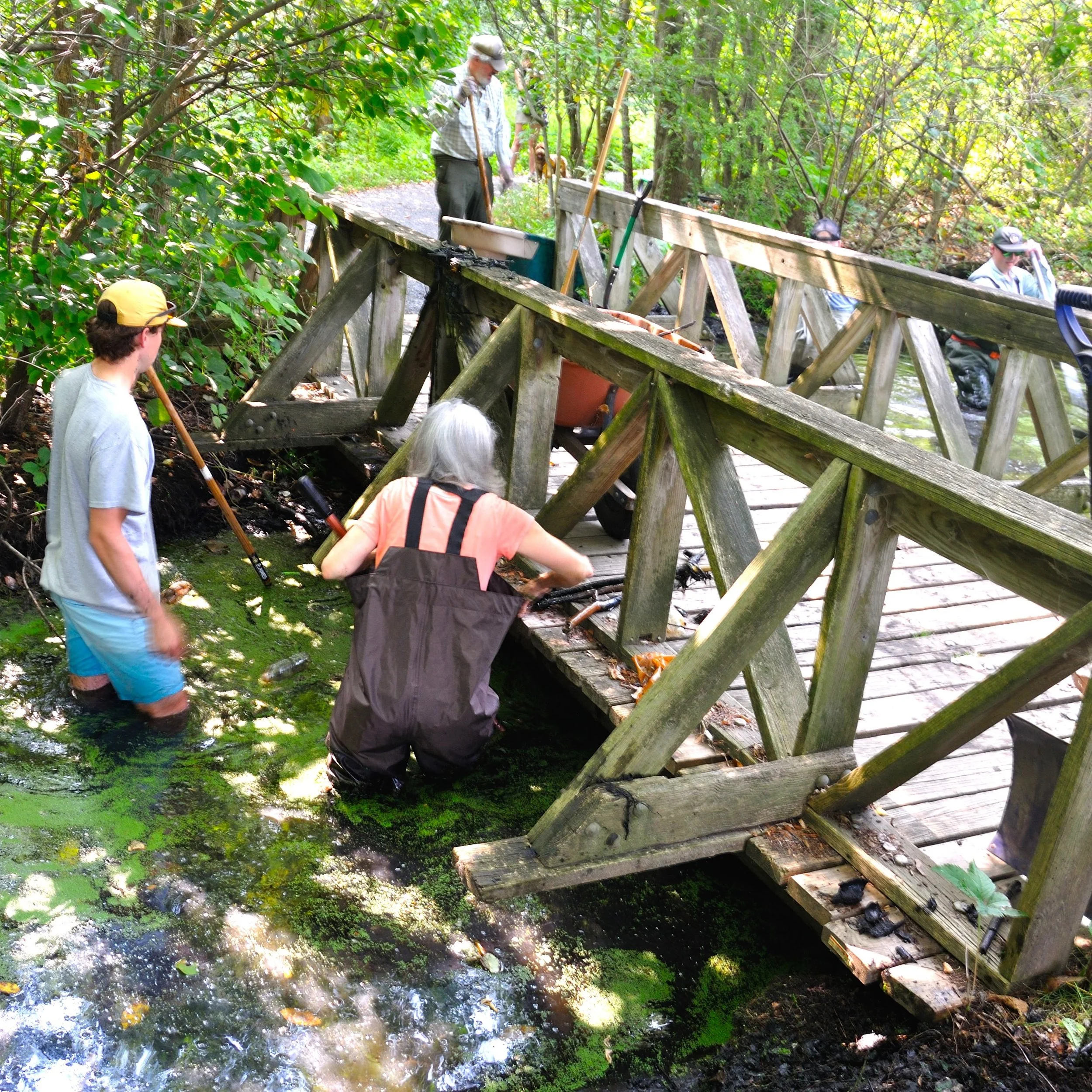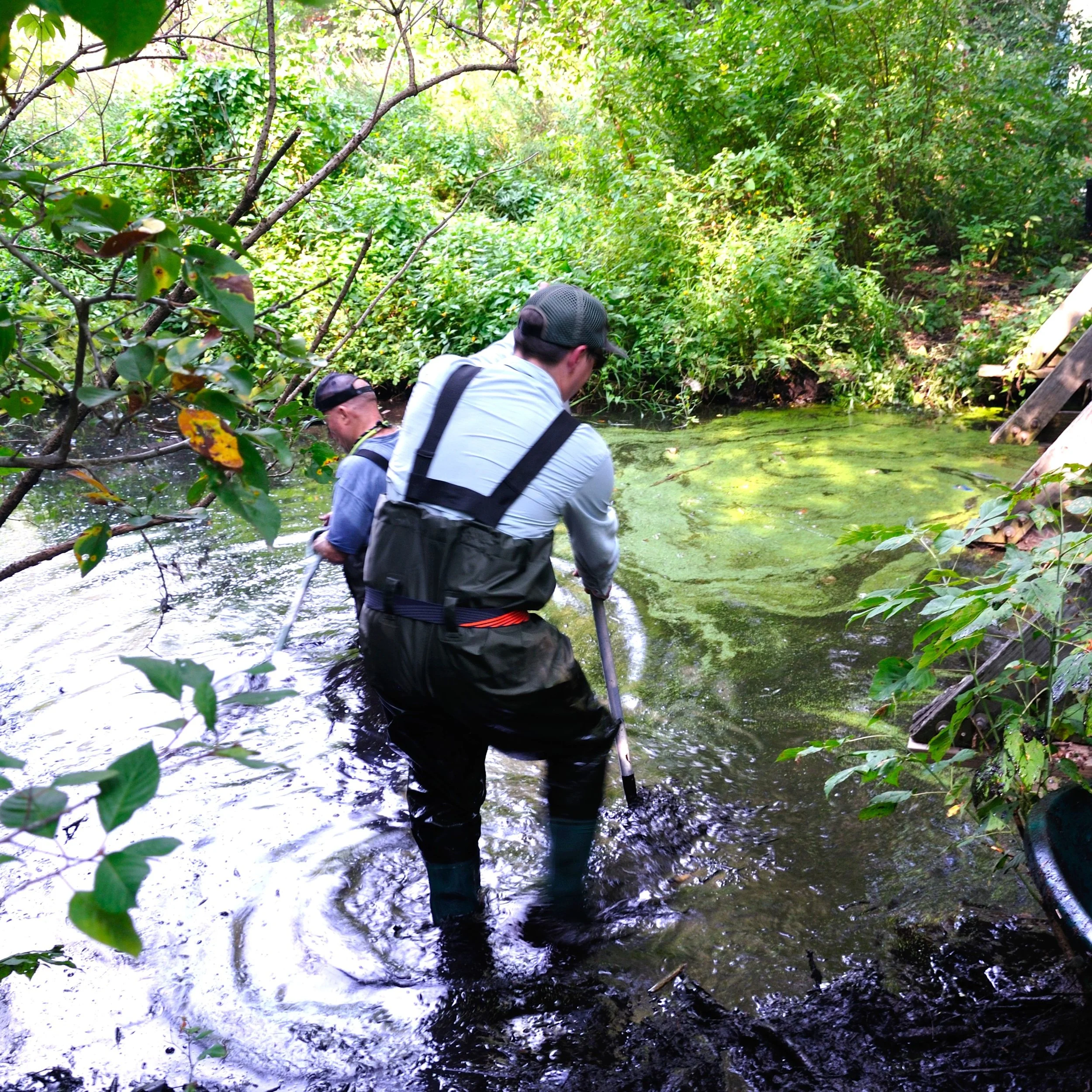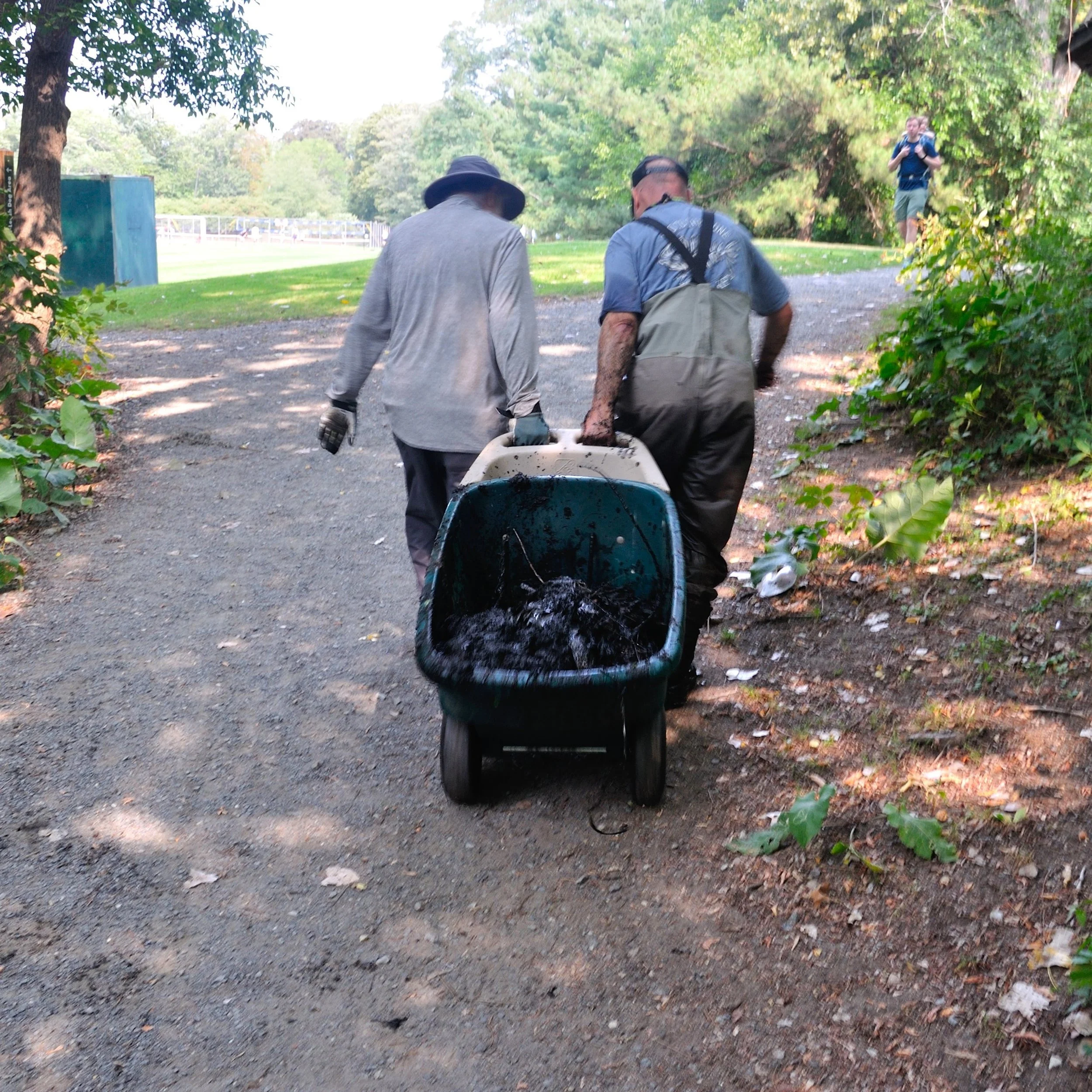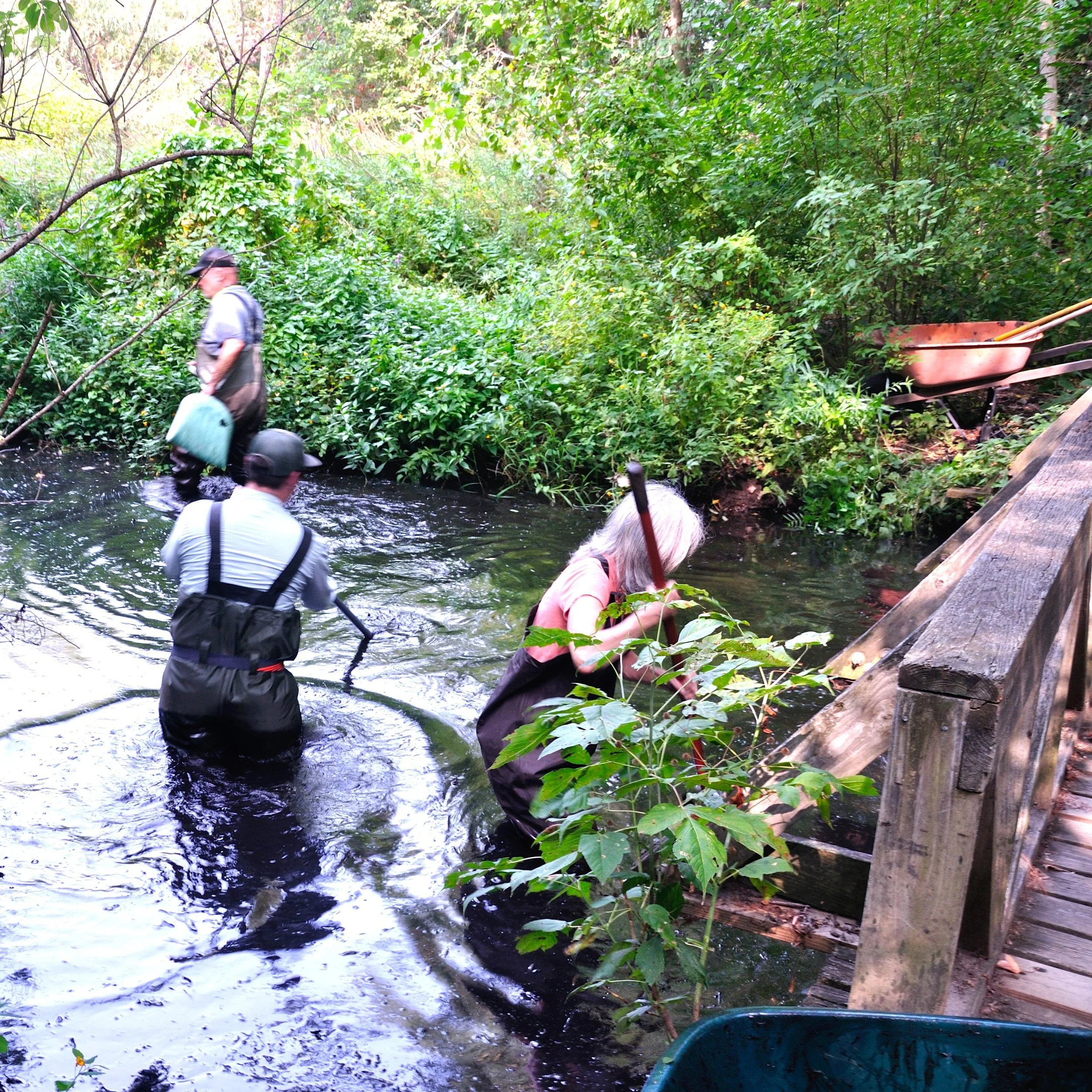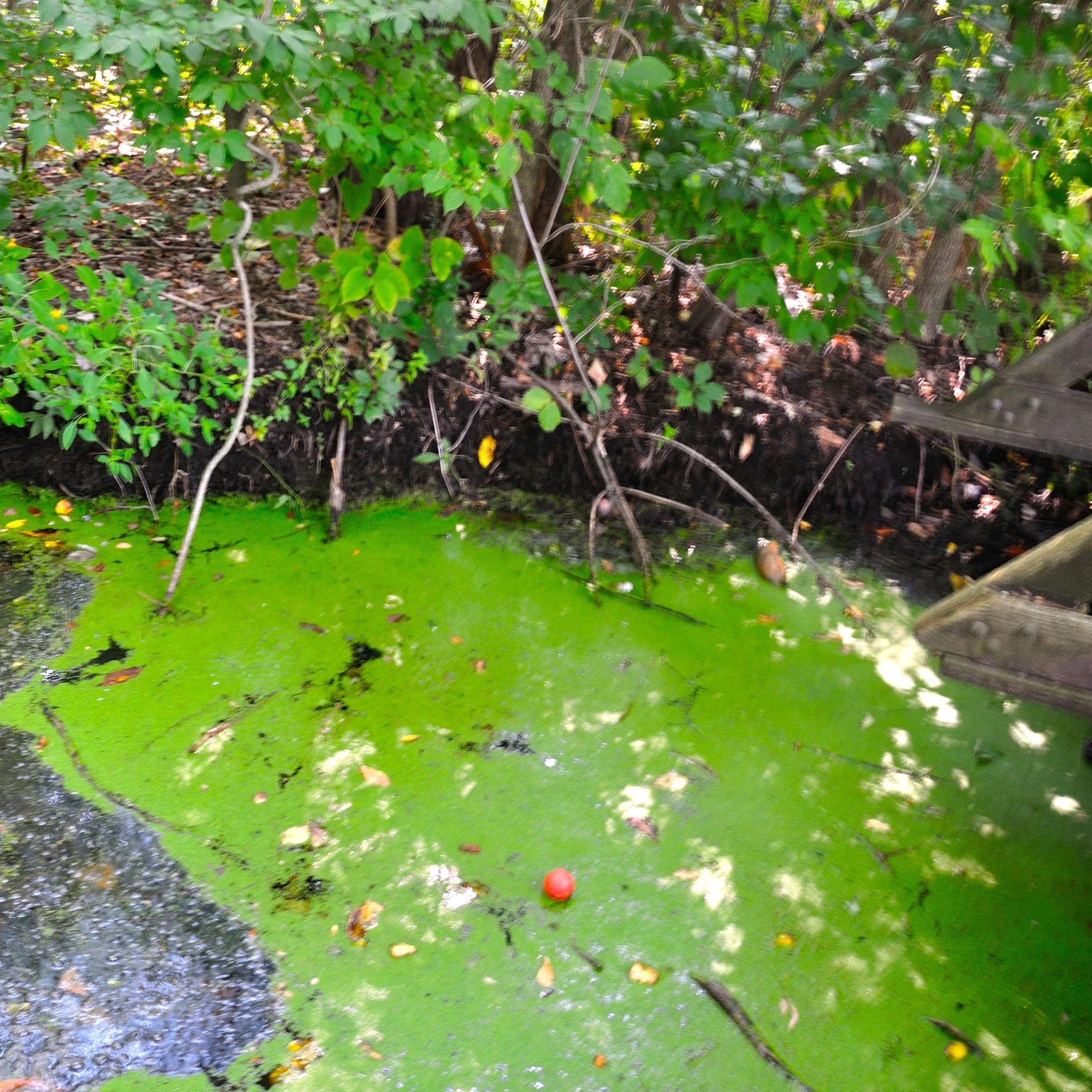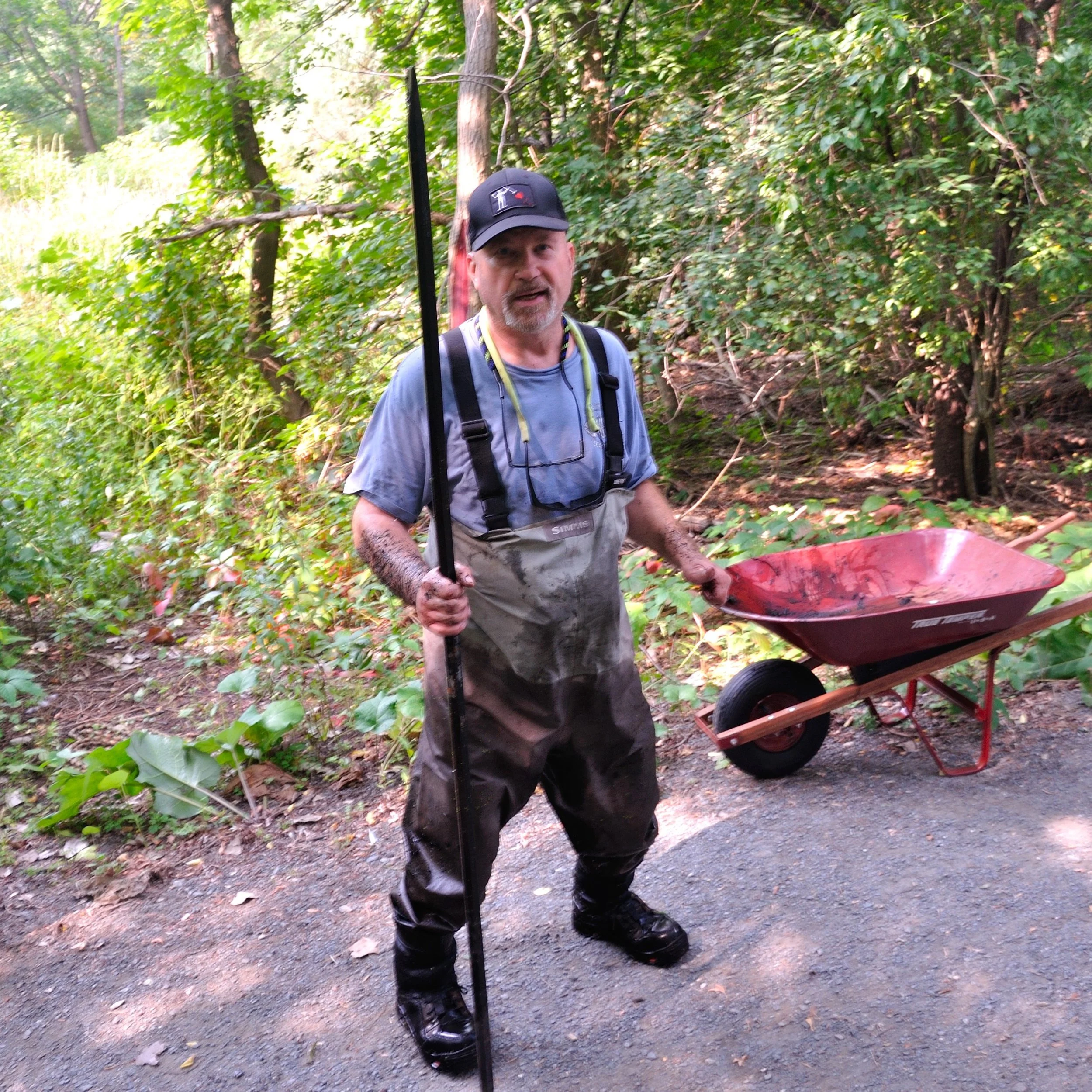Holistic Stream Assessment/Restoration: Cold Spring Brook - Newton, Massachusetts
A rare open and relatively natural section of Cold Spring Brook in Newton, Massachusetts.
“1930s: Alcock’s Swamp was drained, and the brook was rechanneled, lowered five feet, and partly culverted... ”
Raised in a suburb just outside of Boston, NFC Executive Director Bob Mallard was fascinated by the city’s network of subterranean streams, most of which have been partially hidden from view for well over a century. Even where these streams flow above ground, they have been straightened, dredged, corralled within cement walls, and left with little if any in-stream structure. But the water still flows…
Mallard stumbled on an article about “daylighting,” a process where buried streams are opened up to the sky, sun, and air again. This got him thinking about the hidden streams of his youth. Bob reached out to MA NFC board member Jeff Moore, a friend since elementary school who grew up in the same town. They devised a plan to reconnect with the stream they were most familiar with, Cold Spring Brook.
Above Left to Right: Cold Spring Brook where it first emerges from its long buried headwaters, one of several makeshift bridges over the stream, and where the stream disappears underground again just short of busy Beacon Street.
Jeff headed to Cold Spring Brook to get a firsthand look. Starting at the point where the stream first emerges from its long buried headwaters, a large culvert in a playground, Jeff worked downstream to where the stream disappeared under a field of asphalt and grass again. Before calling it a day, Jeff found what we were really looking for - fish…
Small minnows swimming in a tributary of Cold Spring Brook...
Looking to learn more, NFC reached out to City of Newton Chief Environmental Planner Jennifer Steel, film maker/photographer Alex Griswold, Friends of Cold Spring Park, and Newton Conservators. While their focus has been primarily on protecting the stream itself and the land around it, as well as possibly daylighting the headwaters, everyone was quite receptive to hearing about NFC’s mission, vision, and ideas in regard to the stream.
Jeff and MA NFC Chair Paul Roell returned to Cold Spring Brook with Alan Nogee of Friends of Cold Spring Park, and Katherine Howard and Jonathan Regosin of Newton Conservators. Focussing on the area where Jeff had found fish, the team seined the water to see what they could find. Much to everyone’s surprise, and pleasure, the group captured several fish, golden shiners of various sizes.
Jonathan Regosin and Jeff Moore seining Cold Spring Brook for fish.
Golden shiners are native to a large swath of the eastern United States. Whether they are native to Cold Spring Brook or not is debatable, and can likely never be proven or disproven. Arguably the most popular and available species used as bait for fishing, golden shiners are likely one of the most moved around species of fish in the nation.
Based on the size of the some of the fish encountered, the golden shiners in Cold Spring Brook appear to be self-sustaining. Specifically, some of the fish sampled were well under the size typically sold as bait. In a heavily manipulated water long thought to be devoid of fish, we see this as a good sign regardless of how they got there…
After learning that American eel had been sighted in Cold Spring Brook in the next segement downstream segement of Cold Spring Park, along with prior positive hits for eel during eDNA metabarcoding testing, NFC decided to take a closer look.
Adam Kautza of MassWildlife netting a shocked eel in Cold Spring Brook. (Jon Goldberg)
Having failed to capture any eels via netting or trapping, NFC contacted MassWildlife to see if they would be willing to do some e-fishing in Cold Spring Brook within Cold Spring Park. They were glad to help and the result was the capture of two eels, one over 20 inches and one roughly 15 inches long.
MA NFC board member Jeff Moore with eel captured from Cold Spring Brook. (Jon Goldberg)
To their credit, the group has braved snow, heat, dense brush, and mud up to their waist to take a closer look at Cold Spring Brook. This shows a level of interest and dedication that could lead to something big. People are just starting to appreciate our urban and suburban waterways and what they bring in regard to quality of place and a connection to the environment.
Jeff Moore and Jon Regosin navigating the deep mud that has accumulated over the years due to channelization and a lack of structure.
NFC’s work at Cold Spring Brook has just begun. Where the project will take us is yet to be determined. We hope to influence any habitat restoration efforts to be as fish-friendly as possible. NFC would also like to discuss adding some large wood deposits to improve in-stream structure, scour out some pools, and create some riffles. Channel narrowing and bank restoration could help as well.
NFC is also looking into using metabarcoding eDNA to try to see what else lives in this severely manipulated and long overlooked stream, at least as far as fish go. We are also discussing deploying some water temperature loggers and intermittency detection devices to see how things hold up in the summer.
Cold Spring Brook near Newton City Hall. From Beacon Street to Commonwealth Avenue, Cold Spring Brook is mostly a series of small manmade ponds connected by pipes.
Projects like Cold Spring Brook are part of what makes NFC unique in the world of fish conservation. There are no gamefish or any possibility of such, hundreds of years of manipulation and neglect, and what would seem to many as insurmountable odds. While NFC can accept failing when things have progressed to a point where they cannot be fixed, we don’t believe in not at least trying…
Note: NFC recently stumbled on a thirdhand statement on the Newton Conservators website that says, "Alcock’s Swamp was drained, and [CSB] was rechanneled, lowered five feet, and partly culverted." It apparently came from a secondhand document called Mysteries of Cold Spring Park which states, "The swamp was ditched and the water drained into the brook, which was rechanneled, partly culverted and lowered five feet.." Now we need to find the firsthand statement or construction plan…
Where there is life, there is hope...

